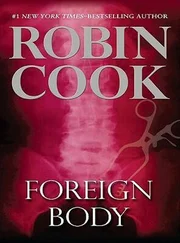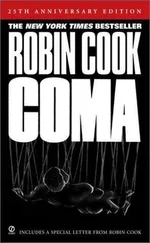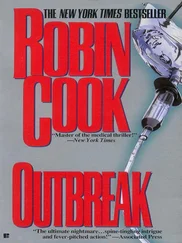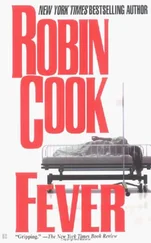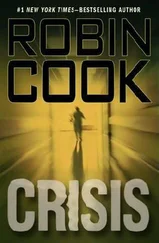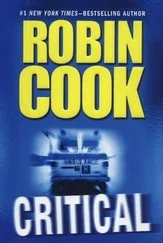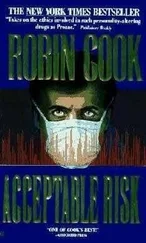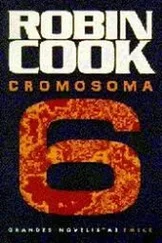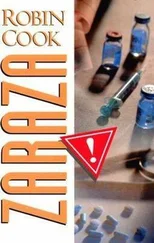“Like the Mass General in Boston?” Sean questioned.
“Something like that,” Dr. Mason said. “We struck a forty-million-dollar deal with Sushita Industries, which has been expanding into biotechnology. The agreement was that Sushita would advance us the money over a period of years in return for which they would control any patents that result. That’s one of the reasons we need the monoclonal antibody to the colonic antigen. We have to produce some commercially viable products if we hope to continue to receive Sushita’s yearly payments. So far we haven’t been doing too well in that regard. And if we don’t maintain our funding we’ll have to shut our doors which, of course, would hurt the public which looks to us for care.”
“A sorry state of affairs,” Sean said.
“Indeed,” Dr. Mason agreed. “But it’s the reality of the new research environment.”
“But your short-term fix will lead to future Japanese dominance.”
“The same can be said about most industries,” Dr. Mason said. “It’s not limited to health-related biotechnology.”
“Why not use the return from patents to fund additional research?”
“There’s no place to get the initial capital,” Dr. Mason said. “Well, that’s not entirely true in our case. Over the last two years we’ve had considerable success with old-fashioned philanthropy. A number of businessmen have given us hefty donations. In fact, we are hosting a black-tie charity dinner tonight. I would very much like to extend an invitation to you. It’s at my home on Star Island.”
“I don’t have the proper clothes,” Sean said, surprised at being invited after the scene with Dr. Levy.
“We thought of that,” Dr. Mason said. “We’ve made arrangements with a tux rental service. All you have to do is call in your sizes, and they will deliver to your apartment.”
“That’s very thoughtful,” Sean said. He was finding it difficult to deal with this on-again, off-again hospitality.
Suddenly the door to Dr. Mason’s office burst open and a formidable woman in a white nurse’s uniform rushed in, planting herself in front of Dr. Mason. She was visibly distressed.
“There’s been another one, Randolph,” she blurted out. “This is the fifth breast cancer patient to die of respiratory failure. I told you that...”
Dr. Mason leapt to his feet. “Margaret, we have company.”
Recoiling as if slapped, the nurse turned to Sean, seeing him for the first time. She was a woman of forty, with a round face, gray hair worn in a tight bun, and solid legs. “Excuse me!” she said, the color draining from her cheeks. “I’m terribly sorry.” Turning back to Dr. Mason, she added, “I knew Dr. Levy had just come in here, but when I saw her return to her office, I thought you were alone.”
“No matter,” said Dr. Mason. He introduced Sean to Margaret Richmond, director of nursing, adding, “Mr. Murphy will be with us for two months.”
Ms. Richmond shook hands perfunctorily with Sean, mumbling it was a pleasure to meet him. Then she took Dr. Mason by the elbow and steered him outside. The door closed, but the latch didn’t catch, and it drifted open again.
Sean could not help but overhear, especially with Ms. Richmond’s sharply penetrating voice. Apparently, another patient on standard chemotherapy for breast cancer had unexpectedly died. She’d been found in her bed totally cyanotic, just as blue as the others.
“This cannot go on!” Margaret snapped. “Someone must be doing this deliberately. There’s no other explanation. It’s always the same shift, and it’s ruining our stats. We have to do something before the medical examiner gets suspicious. And if the media gets ahold of this, it will be a disaster.”
“We’ll meet with Harris,” Dr. Mason said soothingly. “We’ll tell him he has to let everything else slide. We’ll tell him he has to stop it.”
“It can’t go on,” Ms. Richmond repeated. “Harris has to do more than run background checks on the professional staff.”
“I agree,” Dr. Mason said. “We’ll talk to Harris straight away. Just give me a moment to arrange for Mr. Murphy to tour the facility.”
The voices drifted away. Sean moved forward on the couch hoping to hear more, but the outer office remained silent until once again the door burst open. Guiltily he sat back as someone else dashed into the room. This time it was an attractive woman in her twenties dressed in a checkered skirt and white blouse. She was tanned, bubbly, and had a great smile. Hospitality had refreshingly returned.
“Hi, my name’s Claire Barington.”
Sean quickly learned that Claire helped run the center’s public relations department. She dangled keys in front of his face, saying: “These are to your palatial apartment at the Cow’s Palace.” She explained that the center’s residence had gotten its nickname in commemoration of the size of some of its earlier residents.
“I’ll take you over there,” Claire said. “Just to make certain it’s all in order and you’re comfortable. But first Dr. Mason told me to give you a tour of our facility. What do you say?”
“Seems like a good idea to me,” Sean said, pulling himself up from the couch. He’d only been at the Forbes Center for about an hour, and if that hour were any indication of what the two months would be like, it promised to be a curiously interesting sojourn. Provided, of course, he stayed. As he followed the shapely Claire Barington out of Dr. Mason’s office, he began seriously considering calling Dr. Walsh and heading back to Boston. He’d certainly be able to accomplish more there than here if he was to be relegated to busywork involving monoclonal antibodies.
“This, of course, is our administrative area,” Claire said as she launched into a practiced tour. “Henry Falworth’s office is next to Dr. Mason’s. Mr. Falworth is the personnel manager for all non-professional staff. Beyond his office is Dr. Levy’s. Of course, she has another research office downstairs in the maximum containment lab.”
Sean’s ears perked up. “You have a maximum containment lab?” he asked with surprise.
“Absolutely,” Claire said. “Dr. Levy demanded it when she came on board. Besides, the Forbes Cancer Center has all the most up-to-date equipment.”
Sean shrugged. A maximum containment lab designed to safely handle infectious microorganisms seemed a bit excessive.
Pointing in the opposite direction, Claire indicated the clinical office shared by Dr. Stan Wilson, chief of the hospital’s clinical staff, Margaret Richmond, director of nursing, and Dan Selenburg, hospital administrator. “Of course, these people all have private offices on the top floor of the hospital building.”
“This doesn’t interest me,” Sean said. “Let’s see the research areas.”
“Hey, you get the twenty-five-dollar tour or none at all,” she said sternly. Then she laughed. “Humor me! I need the practice.”
Sean smiled. Claire was the most genuine person he’d met so far at the Center. “Fair enough. Lead on!”
Claire took him over to an adjacent room with eight desks manned by busy people. A huge collating copy machine stood off to the side busily functioning. A large computer with multiple modems was behind a glass enclosure like some kind of trophy. A small glass-fronted elevator that was more like a dumbwaiter occupied another wall. It was filled with what appeared to be hospital charts.
“This is the important room!” Claire said with a smile. “It’s where all the bills are sent for hospital and outpatient services. These are the people who deal with the insurance companies. It’s also where my paychecks come from.”
After seeing more of administration than Sean would have liked, Claire finally took him downstairs to see the laboratory facilities which occupied the middle five stories of the structure.
Читать дальше

